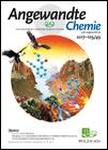版权所有:内蒙古大学图书馆 技术提供:维普资讯• 智图
内蒙古自治区呼和浩特市赛罕区大学西街235号 邮编: 010021

作者机构:Energy Technology Research Institute National Institute of Advanced Industrial Science and Technology (AIST) Umezono 1‐1‐1 Tsukuba 305‐8568 (Japan) Graduate School of System and Information Engineering University of Tsukuba Tennoudai 1‐1‐1 Tsukuba 305‐8573 (Japan) WPI Advanced Institute for Materials Research Tohoku University Sendai 980‐8577 (Japan) National Laboratory of Solid State Microstructures & Department of Energy Science and Engineering Nanjing University Nanjing 210093 (China)
出 版 物:《Angewandte Chemie》
年 卷 期:2015年第127卷第40期
学科分类:081704[工学-应用化学] 08[工学] 0817[工学-化学工程与技术]
主 题:Batterien Elektrochemie Energiespeicherung Langlebige Batterien Natrium
摘 要:Recently, there has been great interest in developing advanced sodium‐ion batteries for large‐scale application. Most efforts have concentrated on the search for high‐performance electrode materials only in sodium half‐cells. Research on sodium full cells for practical application has encountered many problems, such as insufficient cycles with rapid capacity decay, low safety, and low operating voltage. Herein, we present a layered P2‐Na 0.66 Ni 0.17 Co 0.17 Ti 0.66 O 2 , as both an anode (ca. 0.69 V versus Na + /Na) and as a high‐voltage cathode (ca. 3.74 V versus Na + /Na). The full cell based on this bipolar electrode exhibits well‐defined voltage plateaus near 3.10 V, which is the highest average voltage in the symmetric cells. It also shows the longest cycle life (75.9 % capacity retention after 1000 cycles) in all sodium full cells, a usable capacity of 92 mAh g −1 , and superior rate capability (65 mAh g −1 at a high rate of 2C).